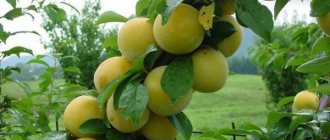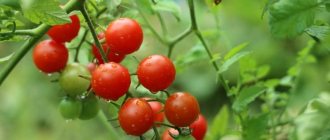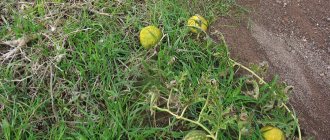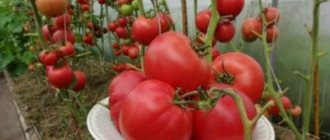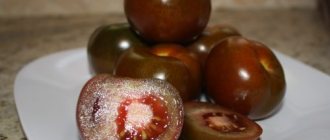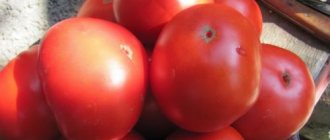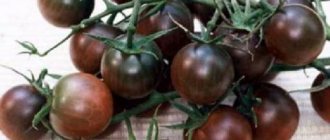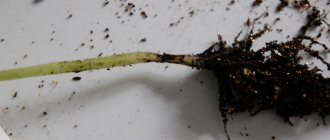Crimson Sweet is a popular high-yielding variety of watermelon. The berries are distinguished by high taste and lack of veins. The article describes the advantages and disadvantages of Crimson Sweet, features of planting and care, as well as the characteristics of the main hybrids of this variety.
watermelon variety “Crimson Sweet”
Watermelon seeds “Crimson Sweet”
Watermelon variety “Crimson Sweet” has juicy, refined pulp, delicate and rich taste and a sweet aftertaste
History of selection
Watermelon Crimson Sweet belongs to the varietal type of crop. It was bred by world famous breeder Charles W. Hall early in his career at Kansas State University. The scientist worked for more than 10 years to improve the characteristics of the variety, and only in 1963 he presented Crimson Sweet to the public.
In 1964, this variety received the title “All-America Selections”, which made the field the most popular among American farmers. A few decades later, Crimson Sweet came to Europe, where it also received wide recognition and began to be grown everywhere.
Region of growth
At home, this melon crop is grown in almost all states, since the variety has not lost popularity for many decades. Also, Crimson Sweet has been considered the standard among sugar watermelons in European countries for many years.
The sweet berry is also grown in Russia; the variety is especially popular among gardeners in the middle zone. In regions with cooler climates, watermelons bear fruit well in greenhouses, but in this case, Crimson Sweet is grown in seedlings.
How to grow this variety yourself
Crimson Sweet can be grown by sowing seeds directly into open ground or growing seedlings from them. The first option is suitable for warm climates. Sowing is carried out on the basis that each plant will require an area of 1.5x1.5 m, if it is open ground.
If you grow watermelons in a greenhouse, you will need less space: about 0.65 x 0.65 m. The latter is due to the fact that the vines in greenhouses are tied up, and not laid down, as in open ground. In greenhouse conditions, the yield will be less: 1-2 watermelons per plant, and in open ground - about 4.
Growing in stages and care
If you decide to germinate the seeds, you will have to deal with the seedlings much longer. But you can harvest the crop a couple of weeks earlier than when planting directly in open ground.
Seeds are sown for seedlings at the end of April - very beginning of May. Use loose, breathable soil. Seeds are sown in holes up to 1 cm deep. In order for seedlings to appear as early as possible, the planted seeds are kept in greenhouse conditions.
Description and characteristics of the watermelon variety Crimson Sweet
Many watermelon lovers avoid buying early berries, as they consider them grassy and tasteless. This certainly does not apply to the Crimson Sweet variety, because even the name of the crop is translated as “Raspberry sweetness.” The berries are distinguished by their high sugar content, tender pulp and juiciness.
Crimson Sweet is one of the best representatives of early ripening varieties. The growing season is only 70-80 days. The berries are very juicy and have a rich, sweet taste. The peel is medium in thickness and does not crack when squeezed.
Watermelon has a round, slightly elongated shape. The color of the peel is dark green, with longitudinal lighter stripes. The surface is without roughness, matte. The pulp is bright crimson in color and has virtually no veins. The seeds are dark brown, medium size. If agricultural techniques are followed, the weight of a mature watermelon can reach 12 kg.
Description and features
Watch the video!
Watermelon variety Crimson Sweet The Crimson Sweet variety differs from the mass of other types of watermelons in the following features:
- It is distinguished by an increased amount of sugars in the pulp;
- When planting seedlings in greenhouse conditions, the ripening time is reduced by 10-15 days;
- A well-ripened watermelon under favorable conditions ranges from 8-9 to 12 kg;
- Not susceptible to most common diseases;
- Belongs to the pumpkin genus.
Watermelon Crimson Sweet has juicy refined pulp, delicate and rich taste and a sweet aftertaste
Thus, the berries of this variety can boast of bright taste and rich tone of ripe pulp. In addition, watermelon ripens in a short time, only 80 days from the moment it is planted in open ground. The most important thing is that the variety in most cases is not afraid of harmful insects and diseases of various types.
According to the description, the Crimson Sweet variety stands out for its large oblong fruits, their matte green peel with light green stripes around the circumference. Watermelons grown in melons weigh 10-12 kg; in summer cottages and greenhouses the weight is slightly lower - from 5-8 kg.
The root system of the watermelon variety develops quickly, the seeds produce the main root and many side roots. The main stem is branched and creeping, stretches up to 5 meters. The leaves are large, triangular, and hard in texture.
Watermelon Crimson Sweet has one of the best taste qualities; its bright red flesh is juicy and harmoniously sweet.
It must be said that like all watermelons, Crimson Sweet belongs to the light and heat-loving crops. That is why it is recommended to plant seedlings in open ground as soon as the air temperature does not drop below 15 degrees. This happens in central Russia no earlier than the end of May. The optimal time for planting seedlings is late May - early June.
Crimson Sweet - heat-loving varieties
In warm climates or when planting in June, it is possible to plant seeds directly into the ground. However, most gardeners practice growing watermelons with seedlings, which are planted in mid-April. When planting seedlings, seedlings usually appear on the 10th day, and with moderate watering and frequent loosening, the seedlings grow quickly and after a month they can already be planted in open ground or under film.
Advantages and disadvantages of the variety
The positive characteristics of early berries are noted by all gardeners who have grown this variety at least once in their garden. The main advantages of Crimson Sweet include:
- high taste qualities;
- marketable condition;
- high productivity;
- drought resistance;
- good transportability;
- resistance to anthracnose.
The short growing season allows watermelons to be grown in different climatic zones without any particular difficulties.
Despite the obvious advantages of Crimson Sweet, this variety also has disadvantages:
- watery taste when the soil is waterlogged;
- lack of immunity to fusarium;
- shrinking of berries due to an excess of nitrogen in the soil.
Compliance with the rules of agricultural technology will help to avoid such problems, and early berries will delight you with their size and sweetness.
See the video below for a review and tasting of the Crimson Sweet watermelon:
Advantages and disadvantages
Judging by its wide popularity, the fruits of the Crimson Sweet watermelon are rated by consumers in accordance with their recognized merits.
- Excellent taste properties;
- High commercial performance;
- Transportability and shelf life of fruits up to 2 months;
- Drought resistance of the plant;
- Low sensitivity of the watermelon variety to anthracnose and fusarium.
Gardeners also find disadvantages in the Crimson Sweet watermelon variety, which in most cases are caused by errors during cultivation.
- The wateriness of the watermelon pulp occurs when watering is continued when the fruit has already begun to ripen;
- A large lash with numerous leaves and small fruits is formed if the plant is given an excess of nitrogen fertilizers or organic matter;
- The watermelon vine produces few fruits if it is in poor conditions: depleted soil, peaty soil or location in the shade.
Warning! At air temperatures below 20 degrees, watermelons slow down the growing season and flowers may fall off.
Landing Features
This variety can be grown either by seedlings or without seedlings. In areas with warm, dry summers, Crimson Sweet seeds are sown directly into open ground in May. More is written about planting watermelons in open ground here.
In the central and western regions, watermelons are mainly grown through seedlings. This will not only prepare the plants for changing weather conditions and harden them, but also harvest the crop 12-15 days earlier.
Regardless of which method of growing watermelons you choose, the area for planting should be prepared in the fall. The culture is light-loving, so the area should not be shaded by a fence or tree crown.
Crimson Sweet bears fruit better on sandy soils with neutral acidity. Chernozem and peat are not suitable for growing melons.
You should not choose areas with high groundwater levels for planting watermelons. Constant waterlogging of the root system leads to its rotting and plant death.
The best predecessors for watermelons are legumes, carrots, onions and cabbage. It is not recommended to plant Crimson Sweet in areas where other melons previously grew: zucchini, pumpkin, melon.
In the fall, before the onset of cold weather, the selected area should be dug up and applied per square meter. m half a bucket of compost or rotted manure. A week before planting, the soil is fertilized with potassium chloride, superphosphate, and ammonium sulfate in a ratio of 20:40:30 g per square meter. m. After applying fertilizer, the area needs to be dug up again, loosened and watered.
Sowing seeds for seedlings
To obtain seedlings, Crimson Sweet seeds are sown in early May. It is advisable to use a special soil mixture for melons. If your nearest store doesn’t have one, choose soil with a high sand content. Prepare containers for planting with a diameter of at least 10 cm in advance.
For sowing, choose seeds harvested 3-4 years ago, since they produce a larger number of plants with female flowers, on which fruits are formed. Remove all broken, empty and small seeds.
Seed material can be soaked before hatching, which will shorten the germination period.
Sow seeds as follows:
- Fill the container 2/3 full with soil mixture;
- moisten the soil using a spray bottle;
- using a pencil, make holes 1-1.5 cm deep;
- bury the seeds in the soil, planting 2 seeds in 1 pot;
- sprinkle the planting material with soil;
- Spray the soil with water again;
- cover the container with film and put it in a warm place (about 25 degrees).
The film must be opened a couple of times a day and the soil ventilated. As soon as the first shoots appear on the surface, remove the film and expose the pots to light.
Seedling care
To get strong and healthy seedlings, it is necessary to maintain the correct temperature. In the daytime, the temperature of young seedlings should not be higher than +22 degrees, at night +20. On cloudy days, seedlings are illuminated with special phytolamps or the temperature is reduced to +18 to avoid stretching of the sprouts.
As the seedlings grow, add soil to the container, which will stimulate the formation of new lateral roots. A week later, after the first shoots appear, fertilizing is done. Complex mineral fertilizers (15 g per 5 liters of water) are suitable. After another week, add mullein infusion diluted with water in a ratio of 1:10.
Planting in open ground
Seedlings are considered ready for planting in the ground when 3-5 true leaves appear on them. This usually occurs 20-23 days after emergence. By this time, the soil temperature should warm up to +15 degrees.
In order for plants to take root better in a new place, they should be hardened off before planting. To do this, the pots are taken outside into direct sunlight, first for a couple of hours, and then for the whole day. 3 days before planting, watering the seedlings should be stopped.
The procedure for planting seedlings in open ground is carried out according to the following scheme:
- In the prepared area, make holes 10 cm deep in a checkerboard pattern at a distance of 1.5 m from each other.
- Water the holes generously.
- Remove the seedling from the pot along with a lump of earth and place it vertically in the hole.
- Sprinkle with soil and tamp down.
Rules of care
Watermelon Crimson Sweet is demanding in terms of agricultural care - this is an important factor that depends on the climatic conditions and soil composition of the site. Simple methods increase immunity, productivity, and plant resistance to the external environment. These include: watering, weed removal, hilling, tying.
Watering mode
During the growing season, melons and melons are watered a couple of times a week, and daily watering is distributed over 2 times. The first time occurs in the morning, the second in the evening. For an open area, evening watering is especially important; it nourishes the roots at depth. Daytime cools more and provides moisture to the external structure of the plant.
When flowering occurs, water less often. Later, when the fruits ripen, irrigation stops so as not to create a humid environment for watermelons lying on the ground.
If the soil is covered with black film, before the ovaries form, the bushes are watered daily with 6 liters 2 times a day. When fruits appear on the ovaries, stop irrigation.
Hilling
One of the ways to protect the root system of the Crimson Sweet variety from dense soil and heavy rains is hilling. Creating mounds at the base of the stem stimulates the growth of lateral roots, which subsequently increases nutrition and leads to high yields.
Loosening and weeding
The Crimson Sweet watermelon crop grows at depth and on the surface, so it is important to monitor the soil. It is necessary to promptly remove weed bushes, do weeding, and loosen the soil to a shallow depth so as not to damage the roots.
Garter to support
On open ground, the vines spread out in length, and the watermelons lie on the surface of the ground. This is a natural environment for melons. Growing in a greenhouse involves tying it vertically to a support. When gaining weight, watermelons are placed in a net and tied horizontally.
Cold protection
Young seedlings during the growth period are vulnerable to sharp temperatures, so when the temperature drops they are covered with a greenhouse or agrofibre.
Feeding mode
The first fertilizer is done before planting, saturating the soil with phosphorus and potassium. The next stage of feeding begins 2 weeks after adaptation to open ground. They use organic fertilizer from chicken manure, which is mixed with water at a ratio of 1 to 10. Later, ammonium fertilizer with nitrate is used: 20 g of powder is diluted with 10 liters of water and the bush is watered.
Bush formation
To balance the nutrition on the stem of the Crimson Sweet watermelon, auxiliary shoots are pinched. The bulk of the fruits are formed on the main stem; when 3-4 fruits are formed, the remaining ovaries must be removed.
Forming a bush prevents the vines from growing and taking all the root nutrition. At the same time, the foliage develops evenly and does not block the light from the fruit, which sometimes interferes with ripening.
The Crimson Sweet watermelon variety is one of the most common early varieties in Europe, thanks to its sugary, juicy berries.
The name characterizes the taste, since the word “sweet” is translated from English as sweetness.
To grow a large and high-quality fruit, you need to carefully study the recommendations for growing it in a greenhouse and in open ground, as well as tips for creating optimal conditions for good germination.
For the first time, the Crimson Sweet watermelon was created in France during long breeding work by experienced specialists. Now it is actively grown for production purposes in many European countries. The variety is unpretentious to the soil and feels great in any region, only if the growing area is characterized by cold climatic conditions, it is worth growing the berry in a greenhouse.
The fruit weighing 5-12 kg has an oval, rarely round shape. It has a bright, smooth skin, with well-defined light stripes. The juicy flesh of a bright red hue is distinguished by the complete absence of transverse veins. The main advantages of the Crimson Sweet watermelon include:
Disadvantages include intolerance to rainy weather and large amounts of nitrogen in the soil.
Before growing Crimson Sweets watermelon, you need to study and create optimal conditions for its intensive growth. Only by diligently caring for the plant can you achieve success in obtaining a harvest.
Feeding
During the entire period of growth, watermelon needs to be fertilized only 2 times: before planting and during the formation of the ovary. Before planting, the soil must be fertilized in advance with phosphorus-potassium minerals in the fall. Nitrogen-based chemicals can also be used for feeding, but they can negatively affect the taste of the fruit.
Seedlings that are in the phase of two true leaves are usually sprayed with a solution of Atlet (1 ampoule per 2 liters of water). After this, the plant will become more resistant to diseases and drying out of the root system.
The plant needs abundant watering, since the lack of the required amount of moisture can weaken the root system and the likelihood of the plant wilting. But it is not recommended to water the watermelon after the fruit begins to form. This can negatively affect the quality of the fruits, as they will lose their honey taste and become watery.
When growing watermelon of the Crimson Sweet variety, timely and correct removal of stepsons is of great importance. You need to start the shaping process when the fruit has already become the size of an apple. You should get rid of excess melons without berries. Make a cut on the fruiting branches, leaving 5 leaves behind.
The Crimson Sweet watermelon variety is one of the most common early varieties in Europe, thanks to its sugary, juicy berries. The name characterizes the taste, since the word “sweet” is translated from English as sweetness. To grow a large and high-quality fruit, you need to carefully study the recommendations for growing it in a greenhouse and in open ground, as well as tips for creating optimal conditions for good germination.
Growing watermelons of this variety is possible using two methods: seeds in open ground and sowing for seedlings.
When sowing seedlings, seeds can be hardened by adjusting them to different temperature conditions. At the same time, when grown in this way, fruit ripening begins faster by 1-2 weeks than when planted in open ground.
Sowing seedlings
It is recommended to plant seeds for seedlings in late April - early May. The soil requires loose, airy, well-permeable soil. The depth of the seed placement should not exceed 1 cm.
Sprouted watermelon seeds Crimson Sweet for planting seedlings
For rapid germination of the first shoots, greenhouse conditions should be created. The temperature must be maintained at 25.. 300 C. If there is not enough warmth, the first shoots will not germinate for a long period.
When the first shoots appear, you need to gradually reduce the temperature to 100C over 10 days. Gradually, you should harden the small bush by taking the flowerpots with seedlings out into the fresh air. First for short periods of time, then for up to 5 hours.
Watermelon seedlings in containers
Seedlings should be planted in open ground 4 weeks after germination. It is required that the earth warms up by 15 degrees, otherwise the root system may die.
In open ground
Planting in open ground is much easier. The fields are sown according to a pattern of 2.1 by 2.1 m; up to 10,000 seeds are placed per 1 hectare of land. Under good growing conditions, up to 70 tons of finished product can be collected from this site.
Growing and care conditions
Watermelon cannot be called a whimsical plant, but to obtain a high-quality harvest you will have to regularly care for your plantings. After the 5th leaf appears, the bushes should be hilled up and the soil should be carefully loosened, being careful not to touch the adventitious roots. Carefully remove weeds, as they take away nutrients and most of the moisture from the soil, inhibiting the growth of melons.
It is not advisable to let Crimson Sweet lashes spread along the ground; it is recommended to tie them vertically to a support. In this case, the plant will receive more light, and the root system will have additional space for full development.
Watermelons develop well at a temperature of +22-26 degrees. If the night temperature drops below +10, install arcs over the bushes and cover them with any non-woven material at night.
Watering
Melon seedlings consume a lot of water, so they should be watered generously 1-2 times a week. This will allow the young roots to grow faster and go deeper into the soil. Try to water watermelons in the evening so that the water evaporates more slowly.
When the green mass begins to grow, you need to water the plants as the top layer of soil dries out. After flowering begins, watering is reduced to once every 7-10 days. During the period of formation and ripening of berries, it is recommended to stop watering altogether.
Feeding
Seedlings are fed 2 times during the growing season. 2 weeks after planting the seedlings in the ground, the plants are watered with a solution of mullein or chicken manure in a ratio of 1:10. After 10-15 days, a second fertilizing with nitrogen-containing fertilizers is carried out. It is better to use ammonium nitrate by dissolving 20 g of the drug in a bucket of water.
Reproduction
Watermelons reproduce exclusively by seed. To properly collect Crimson Sweet seeds, do the following:
- select large fruits at the stage of biological ripeness for seeds;
- After cutting the watermelon in half, use a spoon to remove the central seeds along with the pulp and place them in a plastic or glass container;
- leave the future planting material for 2-3 days in a warm place for fermentation;
- rinse the seeds thoroughly under running water;
- Planting material should be stored in glass containers or paper bags.
Harvesting and application
Determining the harvest time is not so difficult: the stem of the watermelon begins to dry out. The fruit's tendrils and leaves also dry out, signaling approaching ripeness. Another sign of ripeness is the size of the fruit: the larger it is, the more ripe the berry. A fully ripened watermelon will crack easily if scratched.
Attention! In a ripened watermelon, the rind becomes uniformly glossy and shiny. A yellow spot appears where the fruit touches the ground.
If you plan not to use the crop immediately, but to store it, collect the fruits only in dry weather.
Important! Store watermelons in a cool, dark room with high humidity. The fruits are periodically inspected, rejecting spoiled specimens.
Options for using the crop:
- fresh, treating family and friends with a delicacy;
- leave for storage for up to 2 months, observing all necessary conditions;
- pickle unripe watermelons;
- make jam from watermelon rinds.
Diseases and pests
Crimson Sweet is a disease-resistant variety, but in unfavorable weather conditions you may encounter some fungal diseases. Most often, plants are affected by powdery mildew, root rot, bacteriosis and fusarium.
The main diseases of watermelon Crimson Sweet and methods of combating them:
| Name of the disease | Symptoms | Treatment methods |
| Powdery mildew | Small whitish spots on the leaves and stem, which lead to deformation and drying out of the affected areas of the plant. | Spray the affected bushes with a three-day infusion of mullein, which must be diluted with water in a ratio of 1:3, with the addition of 1 tsp. copper sulfate. |
| Root rot | Brown spots appear on the lower part of the stem and nearby leaves, the upper part of the bush turns yellow and withers. | Sprinkle the root collars of plants with ash and spray the plantings with 0.1% foundationazole. |
| Bacteriosis | At the beginning of the disease, whitish spots appear on the leaves, which eventually turn into holes. The plant develops poorly, the berries become smaller. | The disease has no cure. Remove affected bushes from the area and burn. |
| Fusarium | The leaves lose turgor, acquire a pale green tint, wither and dry out. The root collar becomes covered with dark spots. | You can try to save sick plants if, at the initial stage of the disease, you feed them with a solution of chicken manure and ash. |
The early variety is also affected by some pests, such as sprout flies, aphids and wireworms. Sprout fly larvae cause irreparable damage to plantings, damaging the roots of young bushes and gnawing chambers in the stems. To destroy the pest, the drug “Karbofos” is used.
Melon aphids can most often be found on the underside of leaves. Adult greenish individuals and their larvae feed on plant sap and destroy flowers and ovaries. Drugs such as Actellik and Fitoverm are effective against aphids.
No less dangerous is the wireworm, which feeds on the roots of agricultural plants, causing their death. The larvae can also climb into the stems of the crop. Special traps are made to catch them. Dig a hole near the plant and place a flat container with vegetable waste in it. Wireworms crawl towards the trap, attracted by the smell. After a couple of days, they take out the trap and burn the contents along with the pests.
Hybrid varieties
Crimson Sweet is a varietal watermelon that has many positive characteristics. However, breeders continued their work and developed several fusarium-resistant crops based on it, while preserving all the advantages of the ancestor. Thus, 2 more popular hybrids were born:
- Crimson Ruby F1;
- Crimson Wonder F1.
Crimson Ruby F1
A high-yielding, early-ripening hybrid suitable for cultivation in most climatic zones of Russia. The crop is distinguished by its ability to quickly grow green mass and form ovaries even under unfavorable weather conditions.
Each vine produces 2-3 fruits, which in biological ripeness can reach a weight of 10-12 kg. The first fruits can be expected within 60-65 days after emergence.
Crimson Ruby is popular due to the high taste and commercial qualities of the berries. In addition, it tolerates heat and drought as well as sudden cold snaps equally well. A special feature of the hybrid is its resistance to fusarium.
Crimson Wonder F1
Watermelon Crimson Wonder is a mid-early hybrid, the ripening period of which ranges from 85 to 90 days. The fruits are large, weighing 9-12 kg. Crimson Wonder is distinguished by its friendly yield. The dark green peel with light stripes is quite thick and durable, which ensures good transportability of the berries.
The pulp has a dark red hue, the taste is sweet and pleasant. The culture is resistant to fusarium, anthracnose and powdery mildew. It easily adapts to different environmental conditions and produces a bountiful harvest even in the dry season.
Reviews from gardeners about watermelon Crimson Sweet
If you still have doubts about whether or not to grow Crimson Sweet watermelon in your garden, reviews from experienced gardeners will help you make the right decision.
★★★★★
Igor Borisovich, 54 years old, summer resident, Moscow region. I often experiment with hybrids, try to follow new products, but I always set aside a place to plant 5-6 bushes of this particular watermelon.
With proper care I have good harvests every year. ★★★★★
Olga, 40 years old, amateur gardener, Krasnodar. I prefer to grow early-ripening varieties of watermelons; Crimson Sweet is one of my favorites.
The berries are tasty, sweet, about 8-9 kg. ★★★★★
Marina, 65 years old, summer resident, Rostov-on-Don. I have been growing this variety at my dacha for 5 years now, and I am satisfied with the size and taste of the fruits.
To make the watermelon as large as possible, I advise you to pinch the vines and remove the side shoots. So the plant spends all its energy on developing the berries, and not on growing tops. ★★★★★
Omsk
One of the best varieties even in Siberia, weighing up to 8.5 kg. This year I grew 18 watermelons on 8 bushes.
Hide
Add your review
Crimson Sweet is a universal variety that shows consistently good results year after year. Its popularity is due to its high taste, productivity and disease resistance. The crop easily adapts to unfavorable weather conditions, which allows it to be grown in different climatic zones.
0
0
Copy link

